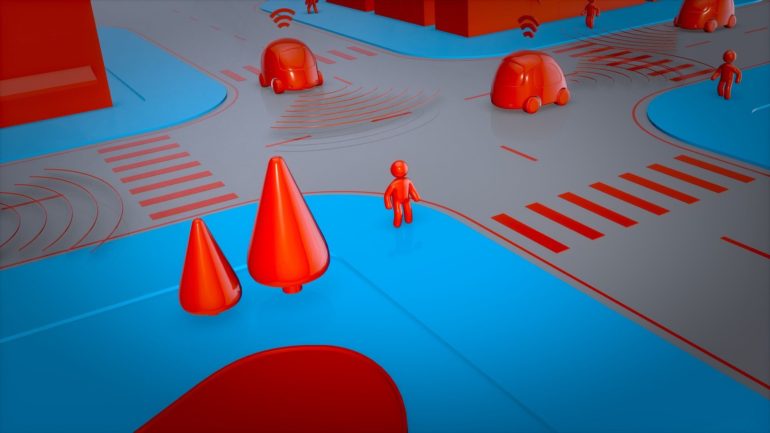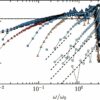In 2015, Elon Musk guessed that the industry should expect fully autonomous vehicles by 2018—but that never happened. In 2014, Nissan promised multiple, commercially viable driverless vehicles on the market by 2020. While the COVID-19 pandemic did not help the situation, this is another unmet promise. Why do auto manufacturers have to keep moving the goalposts on driverless vehicles? According to a research paper recently published in Nature Communications by the Center for Connected and Automated Transportation (CCAT), one of the obstacles that has hindered the development of autonomous vehicles comes down to a severe inefficiency in the way autonomous vehicle testing and evaluation is performed.
The buzz surrounding autonomous vehicles (AVs) is multi-faceted, but can mostly be attributed to a projected decrease in traffic fatalities and the possibility of providing greater access to education, healthcare and job opportunities to underserved communities. For wide adoption, autonomous driving technology must be proven safe by undergoing a series of rigorous tests to evaluate its intelligence in comparison to a human driver. Unfortunately, there is no known standard test to evaluate the readiness of an AV. Currently, state-of-the-art testing combines software simulation, closed-track testing and on-road testing.
The issue with most of the available simulation software and test tracks is that events of interest, including accidents, rarely happen. Thus, systems might require hundreds of millions (sometimes billions) of miles driven to demonstrate safety performance. To date, Waymo has only simulated 15 billion miles in total. Scenario-based testing has been used in practice, where corner cases are designed by safety experts or collected from on-road testing and are replayed to examine an AV’s response. However, these scenarios are distinct and impossible to list. Typically, they only involve simple maneuvers, a small number of vehicles, and short driving times. Work conducted by Dr. Liu and his team aims to construct at naturalistic and adversarial driving environment (NADE), hoping to overcome the above obstacles and improve the efficiency of closed-track and simulation testing/evaluation.
Dr. Henry Liu, civil and environmental engineering professor at the University of Michigan, constructed a simulated driving environment using large-scale naturalistic driving data that was collected by the University of Michigan Transportation Research Institute (UMTRI). By training background vehicles to learn when to executive certain adversarial maneuvers, while simultaneously keeping most of the driving environment naturalistic, the newly proposed testing method eliminates bias and improves efficiency.
In contrast to scenario-based approaches, NADE is continuous, allowing for uninterrupted interaction between AVs and multiple background vehicles. For example, if a researcher wants to test their vehicle in an urban environment, this approach would allow the testing AV to drive continuously and experience adversarial scenarios including cut-ins and hard braking events at higher rates. The results show that this environment eliminates the inefficiency of the currently available options by multiple orders of magnitude. It is expected that this approach can accelerate the deployment of autonomous vehicles.
The methodology proposed by this paper, along with Dr. Liu’s augmented reality test environment, will be implemented at the American Center for Mobility (ACM) in 2021. Founded in 2016, the American Center for Mobility is a smart city test center located on over 500 acres at the historic Willow Run site in Ypsilanti, MI. ACM is a collaborative effort composed of government, industry and academic organizations focused on accelerating the mobility industry through research, testing, standards development and educational programming. This partnership aims to make southeast Michigan the preeminent location for autonomous vehicle testing and validation.
“Driving one mile at ACM using augmented reality simulation with NADE superimposed on our track could be equal to hundreds or thousands of public road miles, leading to dramatically lower overall cost and lead times to validate AVs in a safer, controlled, repeatable test environment. ACM sees this as a significant product development resource and enabler for AV developers,” said president and CEO of ACM, Reuben Sarkar.
US safety agency seeks input on autonomous vehicle rules
More information:
Shuo Feng et al. Intelligent driving intelligence test for autonomous vehicles with naturalistic and adversarial environment, Nature Communications (2021). DOI: 10.1038/s41467-021-21007-8
Provided by
University of Michigan
Citation:
A better intelligence test for autonomous driving systems (2021, February 3)
retrieved 7 February 2021
from https://techxplore.com/news/2021-02-intelligence-autonomous.html
This document is subject to copyright. Apart from any fair dealing for the purpose of private study or research, no
part may be reproduced without the written permission. The content is provided for information purposes only.



